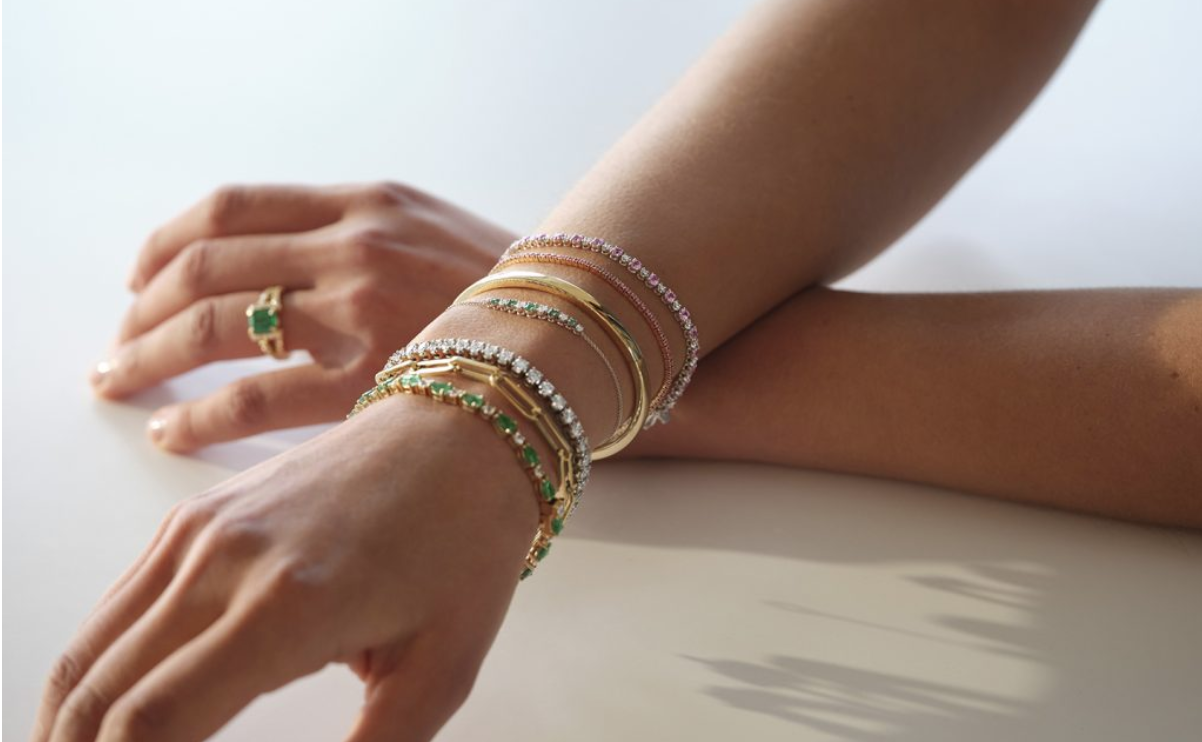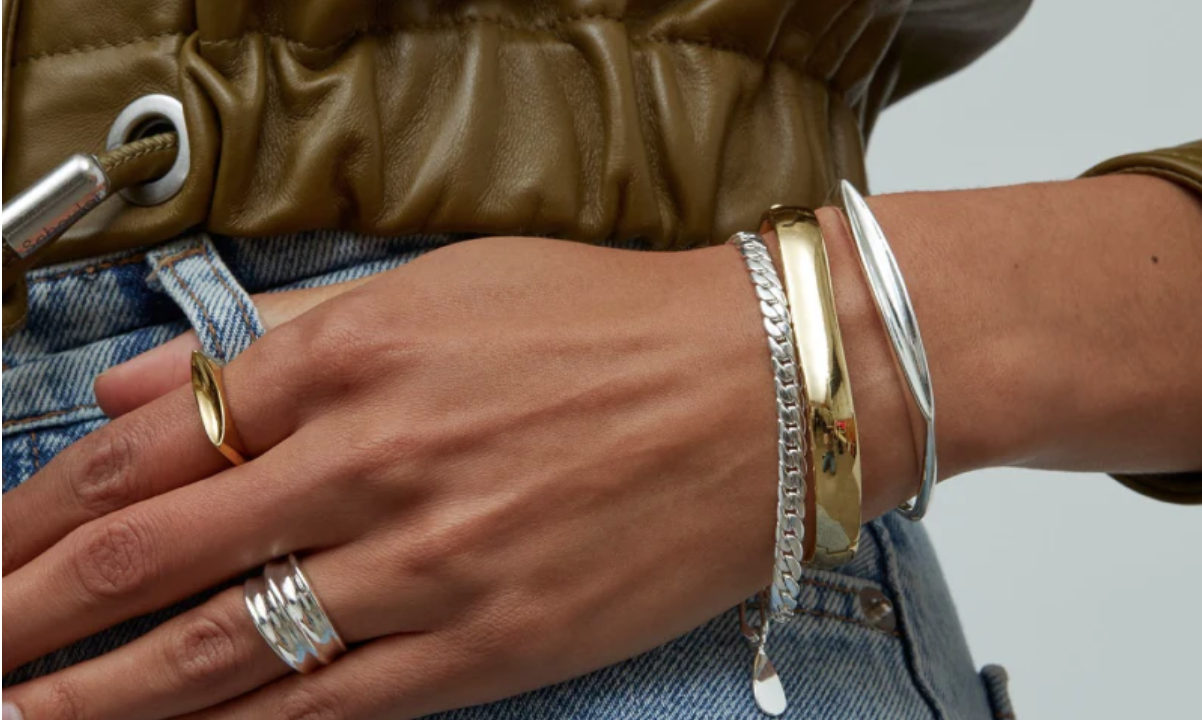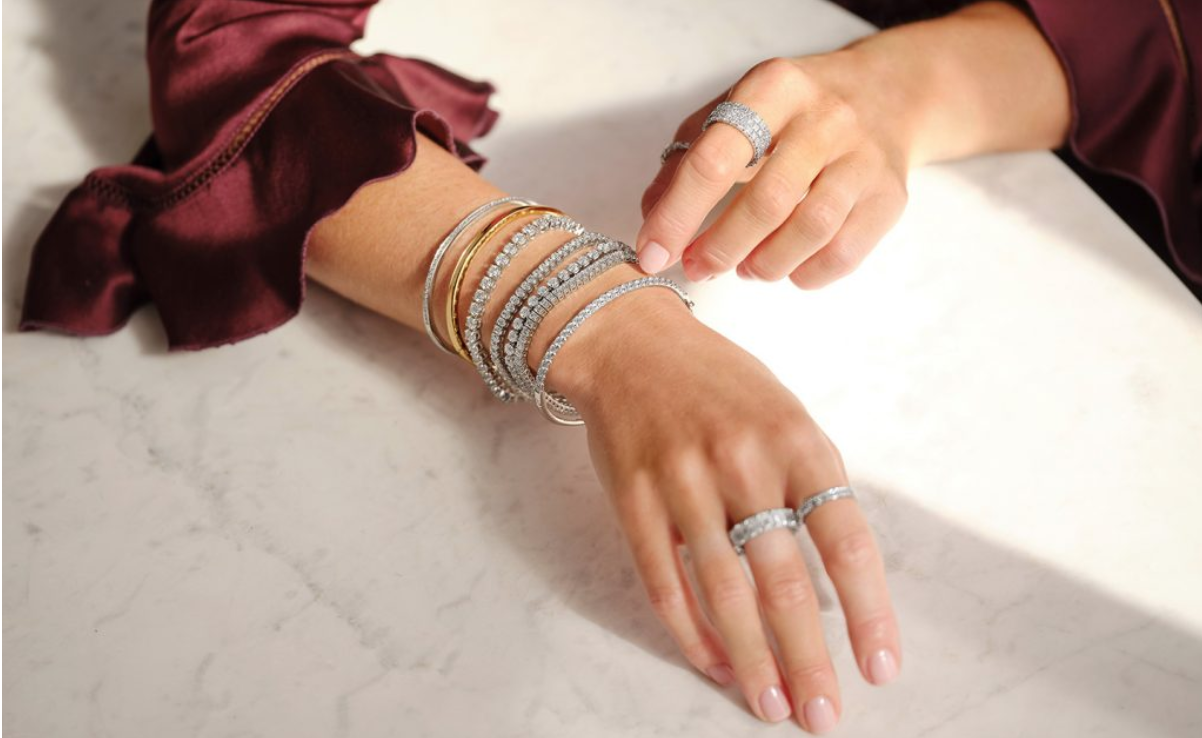Mixing and matching different jewelry metals has become a stylish trend that defies old fashion rules. Whether you’re blending silver with gold or pairing rose gold with platinum, combining metals adds versatility and personal flair to your look. However, doing it well requires balance and a few style strategies. In this article, we’ll guide you through how to confidently mix and match different jewelry metals for a harmonious and fashionable effect.

Why Mixing Metals Works
Gone are the days when sticking to one type of metal was the rule of thumb. Mixing metals works because it brings texture, contrast, and a more personalized style to your outfit. Different metals can enhance each other when styled well, creating an eclectic yet polished look. The key is blending them in a way that complements your outfit and overall aesthetic.
Breaking Old Fashion Rules
Fashion used to dictate that you should wear all silver, all gold, or one metal at a time. But modern trends embrace breaking those old rules. Mixing metals allows you to experiment with your jewelry and create a statement look that’s truly your own. Whether you’re wearing classic pieces or trendy designs, combining metals gives you the freedom to express yourself.
Tips for Mixing and Matching Jewelry Metals
When mixing different metals, there are a few tips to keep in mind to ensure your look is cohesive and stylish.
1. Choose a Dominant Metal
While mixing metals is all about variety, it helps to pick one dominant metal to anchor your look. This metal will act as the foundation, and the others will serve as accents. For instance, if you prefer gold, you can incorporate touches of silver or rose gold through smaller pieces, such as earrings or a bracelet. By having a dominant metal, you keep your look grounded and unified.
2. Layer with Intent
Layering jewelry is a great way to experiment with different metals. For example, you can layer several necklaces of varying lengths in silver, gold, and rose gold to create a chic, multi-dimensional effect. To avoid a cluttered look, make sure each piece has a distinct role—whether it’s a statement necklace or a delicate chain—so they complement each other instead of competing for attention.
3. Pay Attention to Proportions
Balancing proportions is essential when mixing metals. For example, if you’re wearing large, chunky pieces in one metal, it’s best to pair them with more delicate pieces in another metal to maintain harmony. Mixing a thick gold cuff with dainty silver rings ensures your look doesn’t feel heavy or overwhelming. Proportional balance helps your jewelry look more curated and less chaotic.
4. Incorporate Multi-Metal Jewelry
One of the easiest ways to mix metals is to incorporate pieces that already combine different metals in their design. Many jewelry designers create rings, bracelets, and necklaces that feature both gold and silver, or a blend of rose gold and platinum. These multi-metal pieces serve as a great bridge between the metals you choose to wear and make your combinations look intentional.
5. Match the Overall Style
It’s important to match the overall style of your jewelry. Even when mixing metals, keeping a consistent theme helps the look feel cohesive. For example, if you’re wearing modern, minimalist gold rings, pairing them with sleek, geometric silver pieces will create a unified look. On the other hand, combining vintage-inspired gold pieces with trendy silver jewelry may clash in terms of style.
6. Use Gemstones as a Unifying Element
Gemstones can act as the perfect bridge when mixing metals. A piece that includes diamonds, pearls, or colored gemstones like emeralds or sapphires can tie together different metals. The gemstones become the focus, allowing the metals to serve as complementary elements rather than competing for attention.

What Metals Pair Well Together?
Now that you have the basic principles, let’s look at some specific metal pairings that work well together.
Gold and Silver
Gold and silver are timeless metals that make for a classic pairing. This combination works because they are neutral colors that provide a balanced contrast. Gold’s warmth complements the cooler, sleek look of silver, creating a harmonious blend. For an elegant touch, consider wearing a gold statement necklace with silver hoop earrings.
Rose Gold and White Gold
Rose gold’s pinkish hue makes it an ideal partner for white gold. The softness of rose gold contrasts beautifully with the cooler, more subtle tone of white gold. This combination is perfect for creating a feminine and romantic look.
Platinum and Yellow Gold
For a more luxurious pairing, try mixing platinum with yellow gold. Platinum’s rare, lustrous appearance contrasts with the bright warmth of yellow gold, creating a striking effect. These metals are ideal for formal occasions or when you want to make a bold statement.

Don’t Forget Your Outfit
When mixing and matching jewelry metals, it’s essential to consider your outfit. Your clothes should act as the canvas for your jewelry. For instance, neutral colors like black, white, and gray allow mixed metals to shine. On the other hand, if your outfit is vibrant or colorful, it’s best to keep your metal combinations simple so as not to overpower your look.
Confidence is Key
At the end of the day, confidence is the ultimate accessory when mixing and matching jewelry metals. The way you wear your jewelry is just as important as the pieces themselves. Don’t be afraid to break the rules and experiment with combinations until you find what works best for your style.
